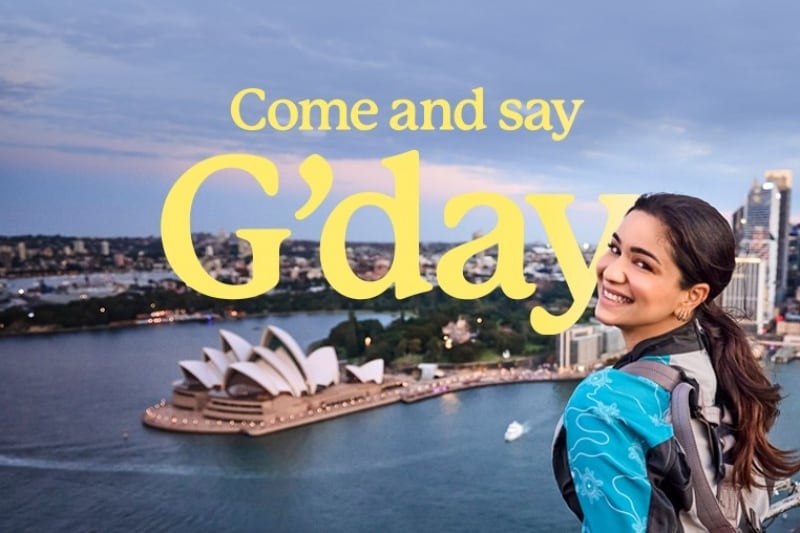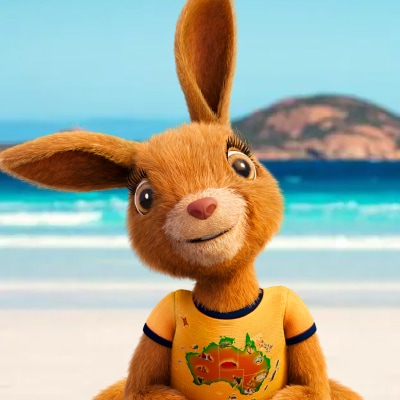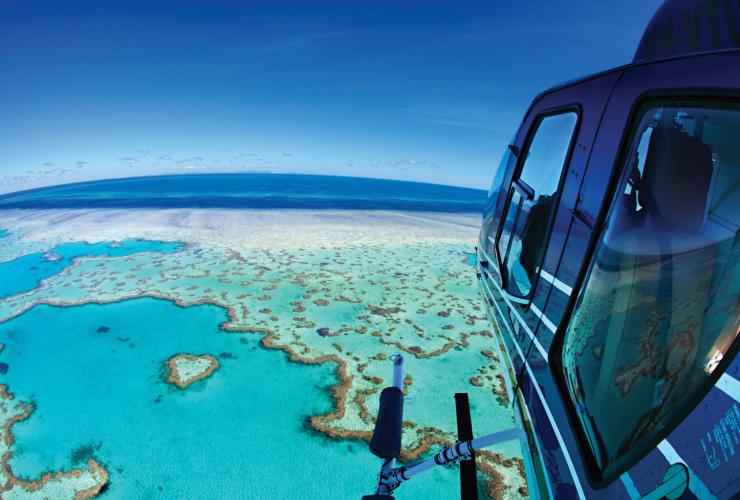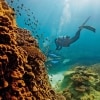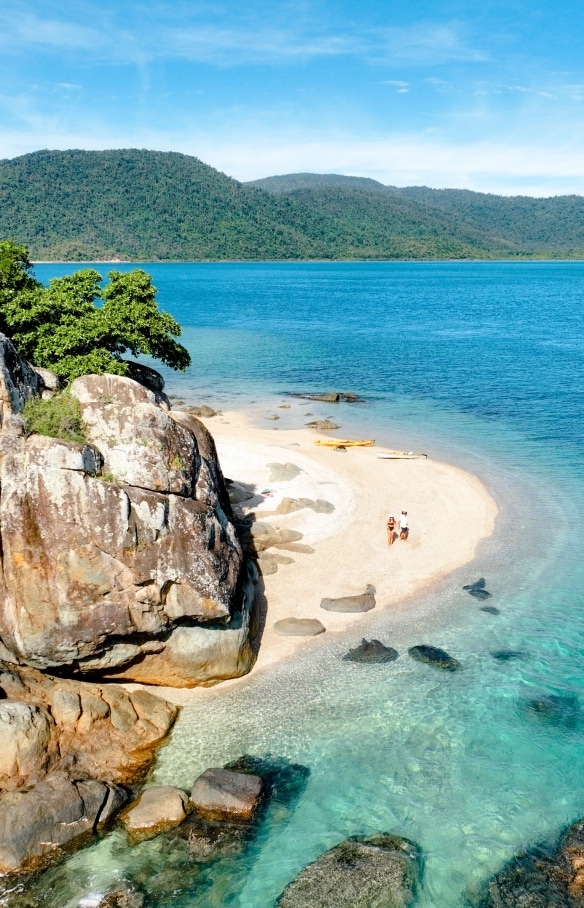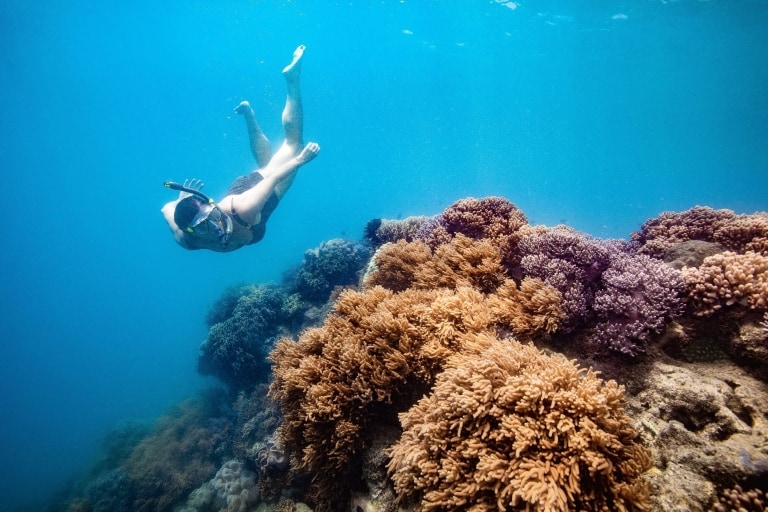
Red Cat Adventures, Whitsundays, Queensland © Tourism Australia
Australia's coral reefs
While the Great Barrier Reef often takes centre stage, it’s not the only incredible coral reef system to grace Australia’s oceans.
The Great Barrier Reef
The Great Barrier Reef
At 2,300km (1,430mi), the Great Barrier Reef is the largest coral reef system in the world. It’s home to over 1,600 species of fish, more than 30 species of whales and dolphins and six of the world’s seven species of marine turtles. Whether you snorkel, scuba or fly over its striking reefs, this underwater playground will captivate you. Take a day trip from Cairns or Port Douglas, or settle into island life on the secluded Orpheus, Lizard, Hamilton or Bedarra islands.
The Southern Great Barrier Reef
The Southern Great Barrier Reef
While technically part of the Great Barrier Reef system, the reef's southern end offers unique experiences that differentiate it from the areas found in the tropical north. From Heron Island, you can snorkel right off the beach or watch turtles nest in the sand. Lady Musgrave is the perfect day trip for experienced and first-time snorkellers alike, while Lady Elliot ranks as one of the world’s top five places to dive with giant manta rays.
Ningaloo Reef
Ningaloo Reef
The World Heritage-listed Ningaloo Marine Park is the world’s largest fringing reef where you can wander straight into the coral reef system from the beach. At 260km (162mi) long, Ningaloo Reef is swarming with turtles, tropical fish, manta rays, humpback whales and the majestic whale shark. In fact, there’s no other place on Earth where whale sharks congregate in such large numbers so close to land. Visit between April and July to swim next to these gentle giants.
Montgomery Reef
Montgomery Reef
Montgomery Reef, in the Lalang-garram/Camden Sound Marine Park on the Kimberley Coast, covers a huge swath of the Indian Ocean. The tidal movements here are some of the biggest – and most spectacular – on Earth. At low tide, the ocean becomes a cascading waterfall, revealing the reef and its marine life. Join a cruise from Broome and look out for turtles, dolphins, dugongs and saltwater crocodiles, as well as humpback whales, minke whales and false killer whales.
Lord Howe Island Marine Park
Lord Howe Island Marine Park
More than 80 coral species can be found in the Lord Howe Island Marine Park – the world's southernmost coral reef. Take a flight from Sydney to the vibrant paradise of Lord Howe Island to swim, snorkel and dive in impossibly blue waters. Below the water, you'll find the remains of an extinct volcano that's home to colourful fish and sea turtles. Avid scuba divers are spoiled here with a selection of over 50 dive sites.
